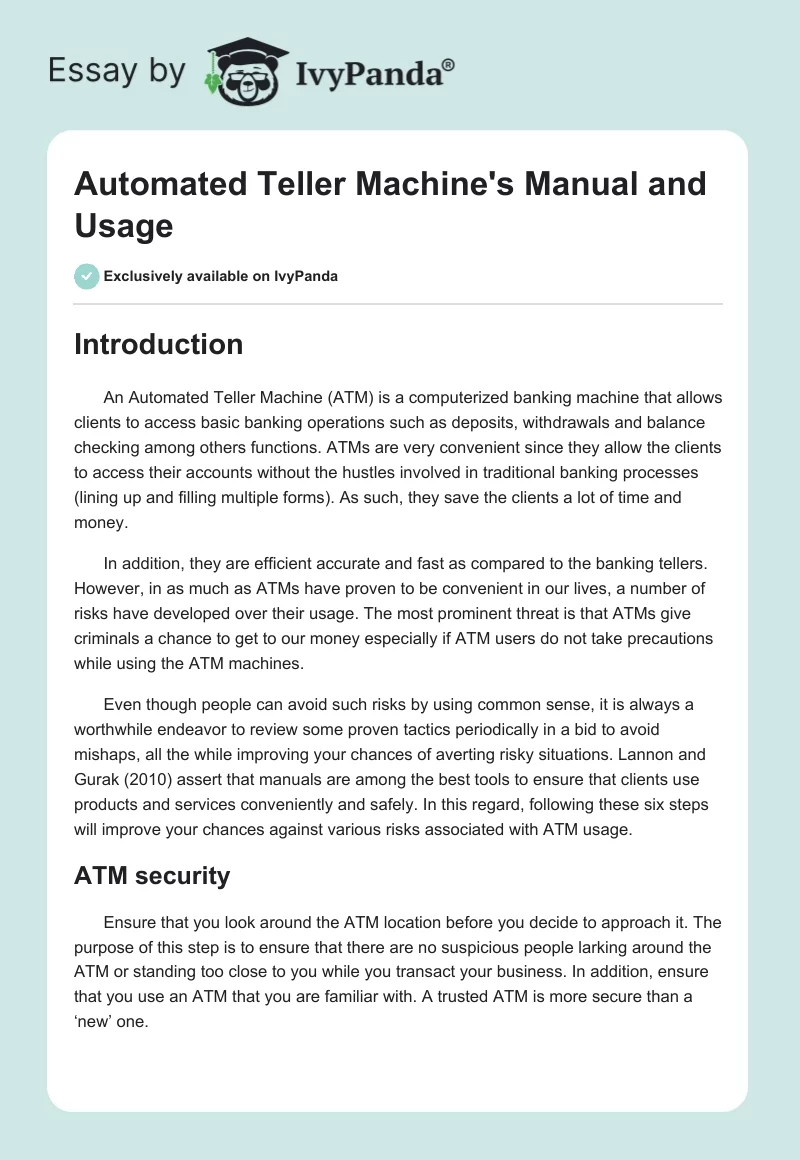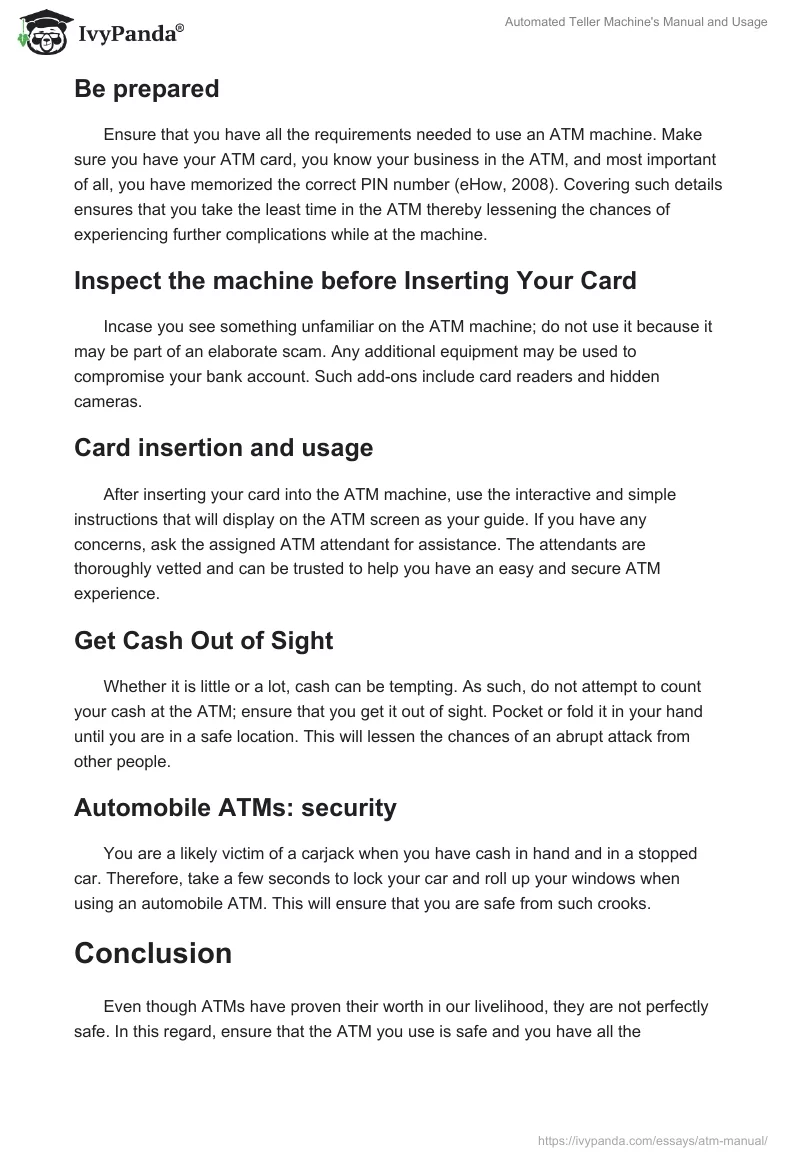Introduction
An Automated Teller Machine (ATM) is a computerized banking machine that allows clients to access basic banking operations such as deposits, withdrawals and balance checking among others functions. ATMs are very convenient since they allow the clients to access their accounts without the hustles involved in traditional banking processes (lining up and filling multiple forms). As such, they save the clients a lot of time and money.
In addition, they are efficient accurate and fast as compared to the banking tellers. However, in as much as ATMs have proven to be convenient in our lives, a number of risks have developed over their usage. The most prominent threat is that ATMs give criminals a chance to get to our money especially if ATM users do not take precautions while using the ATM machines.
Even though people can avoid such risks by using common sense, it is always a worthwhile endeavor to review some proven tactics periodically in a bid to avoid mishaps, all the while improving your chances of averting risky situations. Lannon and Gurak (2010) assert that manuals are among the best tools to ensure that clients use products and services conveniently and safely. In this regard, following these six steps will improve your chances against various risks associated with ATM usage.
ATM security
Ensure that you look around the ATM location before you decide to approach it. The purpose of this step is to ensure that there are no suspicious people larking around the ATM or standing too close to you while you transact your business. In addition, ensure that you use an ATM that you are familiar with. A trusted ATM is more secure than a ‘new’ one.
Be prepared
Ensure that you have all the requirements needed to use an ATM machine. Make sure you have your ATM card, you know your business in the ATM, and most important of all, you have memorized the correct PIN number (eHow, 2008). Covering such details ensures that you take the least time in the ATM thereby lessening the chances of experiencing further complications while at the machine.
Inspect the machine before Inserting Your Card
Incase you see something unfamiliar on the ATM machine; do not use it because it may be part of an elaborate scam. Any additional equipment may be used to compromise your bank account. Such add-ons include card readers and hidden cameras.
Card insertion and usage
After inserting your card into the ATM machine, use the interactive and simple instructions that will display on the ATM screen as your guide. If you have any concerns, ask the assigned ATM attendant for assistance. The attendants are thoroughly vetted and can be trusted to help you have an easy and secure ATM experience.
Get Cash Out of Sight
Whether it is little or a lot, cash can be tempting. As such, do not attempt to count your cash at the ATM; ensure that you get it out of sight. Pocket or fold it in your hand until you are in a safe location. This will lessen the chances of an abrupt attack from other people.
Automobile ATMs: security
You are a likely victim of a carjack when you have cash in hand and in a stopped car. Therefore, take a few seconds to lock your car and roll up your windows when using an automobile ATM. This will ensure that you are safe from such crooks.
Conclusion
Even though ATMs have proven their worth in our livelihood, they are not perfectly safe. In this regard, ensure that the ATM you use is safe and you have all the requirements needed to use the ATM. In addition, follow the on-screen instructions at the ATM and ask for assistance where required.
After using the ATM, ensure that you hide your money. As precautionary measures: DO NOT share your Personal Identification Number (PIN) with anyone. In addition, do not write it down instead, ensure that you memorize it and change it regularly. Incase of any complications, ask the ATM attendant or contact your bank for assistance.
References
eHow (2008). How to Use an ATM. Web.
Lannon, J., & Gurak, L. (2010). Technical Communication: International Edition. New York: Pearson Education, Limited.


